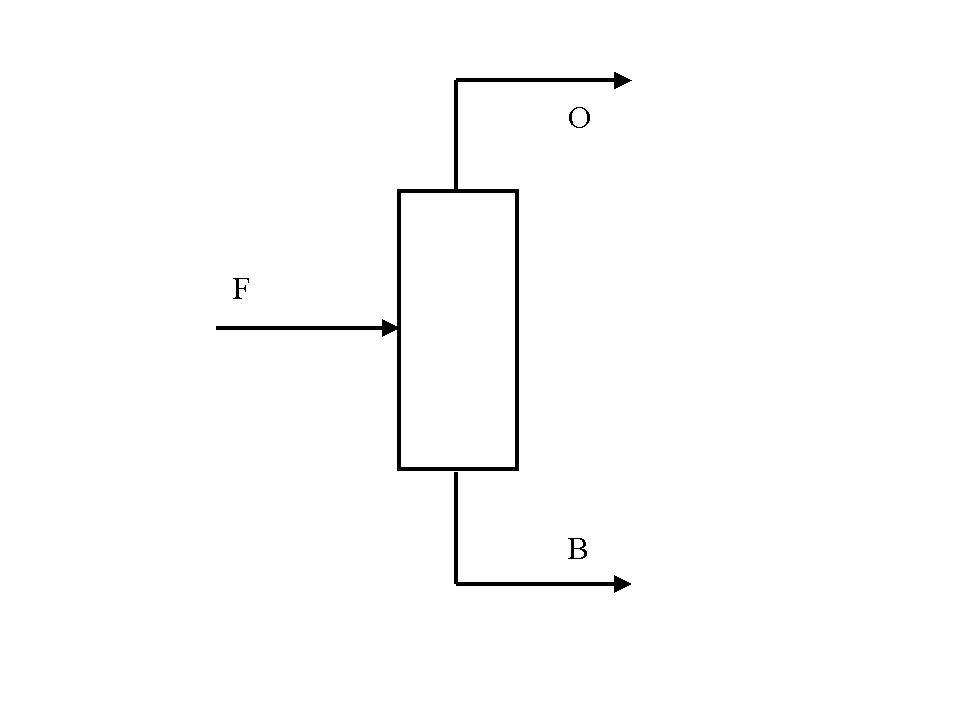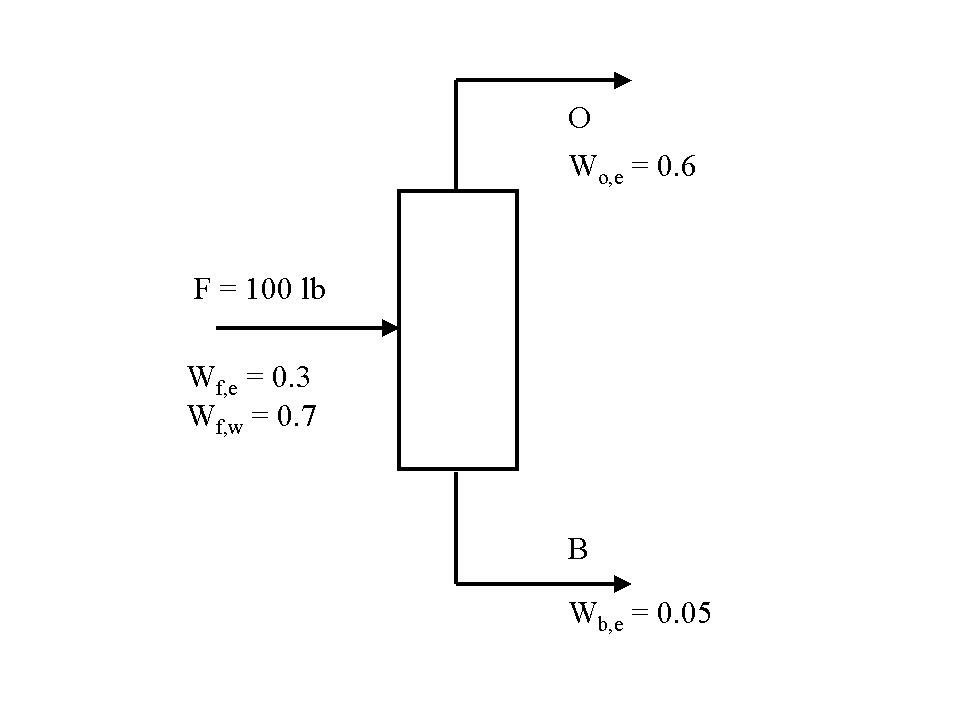Here is a sample problem statement:
A distillation column is to be used to seperate ethanol from water to make a more concentrated whiskey. Mr. Johnson has 100 pounds of a mixture that is 30 % ethanol by weight. The remaining 70% of the mixture is water from the cornmash used to make the whiskey. He wants to make an overhead product that is 60 weight percent ethanol and discard a solution that has 5% ethanol. How much will he be able to serve to his friends?
1) Read the problem.
This is what you always do whenever you are confronted
with a problem statement.
2) Read the problem again.
This is when you start to figure out what the problem
is asking you to do and what the process looks like. You should also
start listing all the information that is given.
3) Sketch the problem.
This will help you figure out what you know and what
you don't know.
We were told that we had a distillation column.
We know what a standard distillation column looks like. If you'd
like to see, click here . Click on
the back button to return to this page.
4) Label the diagram.
This will also help us figure out what we know and don't
know. First I will label the streams with one letter: F for
Feed, O for Overhead, and B for Bottoms.

5) What are you looking for?
If you know what you're looking for, you know when to
stop working on the problem because you are done. Here, we've been
asked to figure out how much whiskey the distillation column will be able
to make, which is called the overhead product, O. So, we are looking
for O in terms of pounds.
6) List all the information given in the problem.
It is generally good to come up with a shorthand way
of representing flowrates and
compositions (how much of each thing there is in each
stream) so you don't have to write so much down. Here we will let
"e" stand for ethanol and "w" stand for water. A big "W" indicates
that we are using the weight fraction of something. So, for example,
Wo,e = 0.60.
Or in other words, the mass fraction of ethanol in the
overhead product stream is 60%.
Adding all the given information to our diagram would
make it look like this:

7) Were we told to use any specific technique to
solve to problem?
In this case, no.
8) Start to solve the problem.
Now that we know what we are looking for and we have
everything drawn and labelled, we
can start to solve the problem.